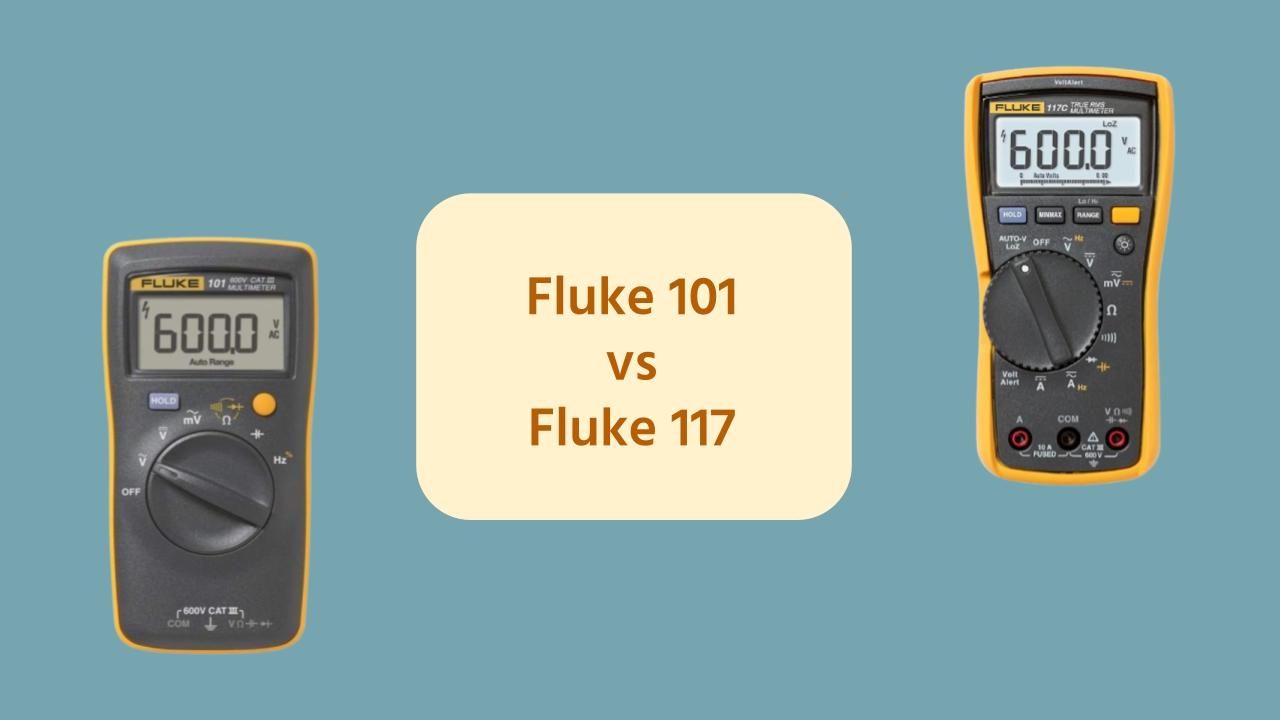In this article, we will compare the Fluke 101 and Fluke 117 to help you determine which multimeter is the best fit for your specific requirements, whether you’re a novice tackling DIY projects or a seasoned professional managing complex electrical systems.
The Fluke 101 is known for its simplicity and portability, making it an excellent choice for basic troubleshooting and quick checks. On the other hand, the Fluke 117 is designed with advanced features suited for professional electricians working in commercial and residential settings.
Comparison Table: Fluke 101 vs 117
| Feature | Fluke 101 | Fluke 117 |
|---|---|---|
| 💳 Price | Check Price | Check Price |
| Category | Basic Pocket Digital Multimeter | True RMS Digital Multimeter |
| Ideal For | Basic electrical tests | Commercial applications |
| Voltage Measurement | AC/DC | AC/DC |
| Current Measurement | No (Voltage and resistance only) | Yes, up to 10A (20A for 30 seconds) |
| Resistance | Up to 40 MΩ | Up to 40 MΩ |
| Capacitance | No | Yes, up to 10,000 µF |
| Frequency | No | Yes |
| True RMS | No | Yes |
| Display | Basic LCD | Larger LED backlit |
| Safety Rating | CAT III 600 V | CAT III 600 V, CAT IV 300 V |
| Special Features | Compact, auto-ranging | VoltAlert™ non-contact voltage detection, AutoV/LoZ function |
🏷️ Fluke Multimeter Deals ⭐⭐⭐⭐⭐
Key Differences Explained
- True RMS: Fluke 117 offers True RMS measurements, making it suitable for accurate readings on non-linear loads, a feature absent in the Fluke 101.
- Current Measurement: Unlike the Fluke 101, the Fluke 117 can measure current up to 10A directly and 20A for short periods.
- Advanced Features: The Fluke 117 includes several features aimed at professional use, such as non-contact voltage detection (VoltAlert™), and the AutoV/LoZ function which prevents false readings caused by ghost voltage. The Fluke 101, being a basic model, lacks these features.
- Display and Build: The Fluke 117 has a larger backlit display which makes it easier to read under poor lighting conditions, whereas the Fluke 101 has a more basic display.
These differences make the Fluke 101 suitable for basic electrical testing, especially for DIY enthusiasts or as a compact tool for quick checks.
On the other hand, the Fluke 117 is designed for professional electricians who require a more robust tool capable of handling a wider range of tests in commercial environments.


